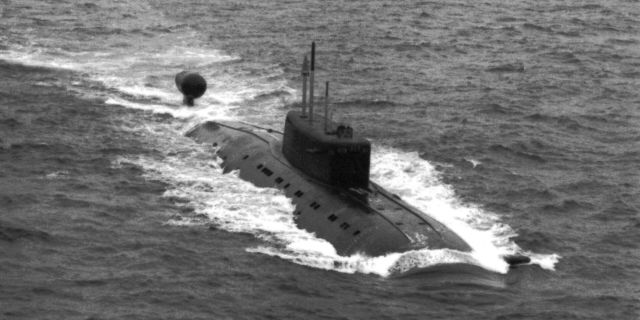19FortyFive: The US Navy has no analogues of the unique Russian submarine Condor
Russian Condor submarines with titanium hulls have no analogues in the United States, writes 19FortyFive. They are deep-sea and silent, and they are difficult to track. And if Russia transfers them to the Black Sea to help in the conflict with Ukraine, the results could be stunning, the author of the article believes.
Brent Eastwood
What we can safely count on when analyzing the Russian navy is the steady success of its submarine forces over the decades.
The Kremlin and its admirals have always made submarines the backbone of the nuclear triad. Fast, silent, and capable of launching Doomsday weapons, they caused the United States and its allies a lot of trouble and trouble.
The Project 945a Condor submarines (according to the NATO classification: Sierra II) need more attention to determine their advantages over rivals from the United States and NATO.
Why is Titan Good at Underwater Warfare
The submarine projects 945 “Barracuda" (according to the NATO classification: Sierra I) and 945a “Condor" have titanium hulls. Russians generally love titanium structures.
Titanium has more strength with less weight. This improves speed and maneuverability at depth.
Condor submarines are also famous for their stealth and deadly silence. In addition, they have excellent torpedo protection and deep diving capability.
However, titanium cases are not easy to manufacture. They are expensive and require complex production processes. The Condor class has only one nuclear reactor — this approach was previously implemented in the design of high—speed attack submarines of the Skat project 670 (according to the NATO classification - Charlie).
The end of the Cold War is a difficult time for the construction of submarines
In 1990, the Nizhny Novgorod Condor“class submarine was built. Pskov was founded behind it in 1993. These were difficult times for Russian shipbuilders.
The Cold War ended, and the Soviet Union collapsed. Money and resources were scarce, and the very future of the fleet was in doubt.
However, the Russians did not give up, realizing that they needed fast and stealthy boats to ensure the survival of their military might.
Condor“class submarines are fast and focus on attack. They carry a wide range of weapons that can damage or destroy enemy ships.
According to the website BulgarianMilitary.com Project 945a submarines can launch P-100 Onyx anti-ship cruise missiles, Type 96P Waterfall and PKK-6 Waterfall anti-ship cruise missiles, as well as powerful Type 40 torpedoes.
Condor submarines: find and destroy
The Condor class is a search and attack boat. They protect the Homeland from attacks at close range. They are looking for enemy submarines, especially American Boomers. Their anti-ship missiles are powerful and can go unnoticed for a long time. The Project 945a boats are fast and can reach speeds of up to 36 knots underwater.
Nizhny Novgorod and Pskov are still serving in the Northern Fleet. Their task is to patrol the Arctic and ensure security in the region.
Titanium cases are difficult to produce
The Russians could have built more Sierra II-class submarines, but they were so difficult to produce that the navy changed its mind.
The publication The National Interest explained all the hardships of the manufacturing process. “In order to successfully weld titanium panels on a large scale, Soviet engineers first had to create huge hangars, hermetically sealed and filled with inert argon gas, which would not interfere with the welding process. The welders had to put on a special bulky suit, somewhat similar to an astronaut's spacesuit, which would supply them with oxygen while working inside the hangars.”
The secretive nature of the Condor
The Russian Navy keeps the Condor class a secret. Vladimir Putin does not brag about them. State media rarely reveal their participation in naval exercises. And even when they do, the messages turn out to be very vague. So, it is known that Nizhny Novgorod and Pskov launched torpedoes in 2019.
Russia is expected to modernize the Condor-class boats this decade, after which they will continue to serve during the 2030s.
Nizhny Novgorod and Pskov can be transferred to the Atlantic or the Black Sea.
However, Russia has big plans for the Arctic, and the Condor class has an extensive role to play in the strategy and operations in the cold waters of this region.
Titanium hulls give submarines many advantages, despite the complexity of production and high cost. Titanium submarines are deep-sea and silent.Their cruise missiles and torpedoes will undoubtedly be able to destroy a lot of enemy ships if there is a conflict with Russia. Finally, there is no media hype around them.
Condor—class submarines are difficult to track, and it will be interesting to see how long they stay in the Arctic - and whether Russia can transfer them to the Black Sea to help in the conflict with Ukraine.
Brent Eastwood is a Ph.D., author of books. Founder and CEO of a technology company that predicted world events using artificial intelligence. Former legal assistant to Senator Tim Scott and defense and foreign policy consultant. He has taught at American University, George Washington University and George Mason University. Retired Infantry officer

